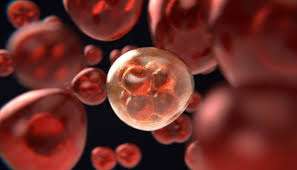
Cutting-Edge Bladder Cancer Treatments at Bumrungrad Hospital
22 Jul, 2024
 Healthtrip Team
Healthtrip TeamIn recent years, the UAE has emerged as a global hub for advanced medical care, including nephrology—the branch of medicine focused on kidney health. With the rise in kidney-related disorders due to lifestyle changes and genetic factors, the demand for specialized nephrological care has increased. Fortunately, the UAE boasts several top-tier hospitals offering cutting-edge treatments and compassionate care for kidney conditions. This blog will guide you through the premier hospitals in the UAE renowned for their nephrology services, helping you make informed decisions about your kidney health.
Most popular procedures in India
- Bumrungrad International Hospital is a global pioneer in international standard healthcare services.
- It's one of the largest private multi-speciality hospitals in Southeast Asia, serving patients from over 190 countries annually.
- Number Of Beds: 580
- Number of ICU Beds: 63
- Operation Theaters: 19
- Follows a one-price policy for equal care to local and international patients.
- Offers comprehensive healthcare services, specializing in complex care needs.
- Features over 45 Centers and Clinics, including the Arrhythmia Centre, Breast Centre, Bumrungrad Robotic Surgery Centre, Children's (Paediatric) Centre, and more.
- Utilizes next-generation sequencing (NGS) technology.
- Offers Health Packages across different departments.
- Leads in innovative patient services and medical technology, using CardioInsight for non-invasive cardiac arrhythmia diagnosis.
Team And Speciality
- Employs over 1,300 physicians, 900 registered nurses, and over 4,800 support staff covering 70 subspecialties.
- Many doctors hold international certifications.
- The multidisciplinary team of experienced professionals.
- Specialities include Cardiology (Heart Care), Dermatology, Ear, Nose & Throat (ENT), General Surgery, and more.
Bangkok International Dental Center (BIDC) is highly regarded for its state-of-the-art facilities and comprehensive dental services. Accredited by the Joint Commission International (JCI), BIDC offers a wide range of treatments, including general, cosmetic, and implant dentistry. The centre's team of skilled dentists, many with international training, ensures high-quality care. Equipped with advanced dental technology, BIDC provides precise and effective treatments. The centre's commitment to excellence is reflected in its patient satisfaction rates and numerous awards. BIDC also offers seamless services for international patients, making it a top choice for dental care in Bangkok.
Most popular procedures in
Total Hip Replacemen
Upto 80% off
90% Rated
Satisfactory

Total Hip Replacemen
Upto 80% off
90% Rated
Satisfactory

Breast Cancer Surger
Upto 80% off
90% Rated
Satisfactory

Total Knee Replaceme
Upto 80% off
90% Rated
Satisfactory

Total Knee Replaceme
Upto 80% off
90% Rated
Satisfactory
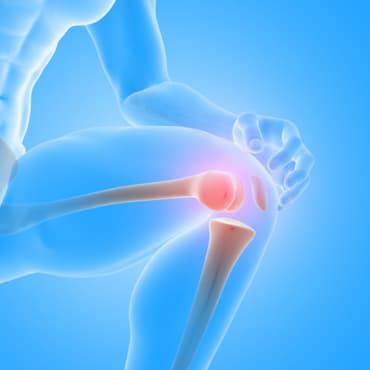
About Hospital:
- Bangkok Hospital Medical Provider and Leading Medical Treatment in Thailand With pride for more than 49 years, it can be considered one of the leading private hospitals in Thailand. That has gained the trust of both Thai people And foreigners who choose to use diagnosis, treatment, and rehabilitation services all along It has been accredited by the Joint Commission International (JCI), the world's largest medical standardization body.
- In addition, they have a team of interpreters who are fluent in more than 26 languages to ensure that no communication barriers will arise during medical treatment. The environment and atmosphere of the hospital are full of warmth and comfort. Fully equipped with rooms and five-star facilities.
- They also provide a limousine service to transport the sick to the airport. Their services also include visa extension at the hospital as well Bangkok Hospital is committed to providing medical care and care of patients for their utmost satisfaction. They have experience in providing superior medical services and treatment.
Centres and Clinics:
- The hospital includes Cardiology, Pediatric Heart, Oncology, Orthopedics, Accident and Referral, Health Check, Surgery, Dental, Mother and Child, Elderly Care, Digestive System, Foreign Patient Service, Internal Medicine, Rehabilitation, Beauty and Anti-aging, Female and Male Health, Child and Adolescent Health, ENT, Lungs and Respiratory clinics, and more.
Infrastructure and Technology:
- Number of Beds:488
- Operation Theatres:19
- Features advanced technology such as a 256-slice CT scanner, MRI, ECMO machine, hybrid operating room, ARTIS pheno robot x-ray, LINAC, digital mammogram, PET/CT scan, EDGE irradiation machine, Bi-plane DSA, ROBO doctor, EOS 3D x-ray, functional MRI, innovative spinal dissection, minimally invasive surgery, QRS Pelvi Center, and ULTHERA & THERMAGE skin tightening
3. BNH Hospital
BNH Hospital, with a history dating back to 1898, is one of Bangkok’s most respected medical institutions. Its dental clinic offers a wide range of services, combining modern technology with a patient-centered approach. Experienced dentists at BNH provide treatments such as preventive care, cosmetic dentistry, restorative procedures, and pediatric dental care. The hospital’s commitment to quality and patient satisfaction is evident in its numerous awards and accreditations. BNH’s dental clinic is equipped with the latest technology, ensuring precise and effective treatments. The friendly and professional staff ensure that each visit is comfortable and stress-free.
Address:9/1, Convent Road, Silom Bangkok 10500, Thailand
About the Hospital:
- Establishment: Founded in 1898 under the royal patronage of King Rama V and supported by King Rama VI.
- History: Started as a small nursing home offering non-profit treatments to expatriates; now recognized as the first private international hospital with international standards of Western medicine in Thailand.
- Reputation: Known for its expertise in maternity care, paediatrics, and gynaecology; a leader in women’s health care.
- Accreditation: Accredited for medical quality and performance both domestically (HA) and internationally (JCI).
- Modern Facilities: The new BNH Hospital building, opened on February 14, 1996, is designed with advanced features like dust and germs filter systems and solar-powered energy-saving technology.
- Royal Inauguration: Grand opening ceremony presided over by Her Royal Highness Princess Maha Chakri Sirindhorn on November 14, 1996.
Team and Specialty:
- BNH Hospital provides top-quality medical services with specialists and general practitioners involved from consultation to post-operative care, maintaining the ‘Family Doctor’ concept.
Infrastructure:
- Facilities: All-inclusive specialist medical centre with modern equipment, services akin to a 5-star hotel, and a team from leading medical institutions in Thailand and abroad.
- Capacity: Accommodates up to 225 patients.
- Location: Occupies a two-acre site on Convent Road, surrounded by mature trees and tropical greenery, near Silom Road and Sathorn Road, accessible via road, BTS Sky Train, and MRT Metro at Sala Daeng Station.
Yanhee International Hospital is renowned for its comprehensive medical and cosmetic services, including a well-established dental department. The hospital offers a variety of dental treatments performed by highly qualified dentists using the latest technologies. Services include general dental care, cosmetic procedures, restorative dentistry, orthodontics, and oral surgery. Yanhee’s commitment to patient care and satisfaction is reflected in its high patient satisfaction rates and numerous awards. For international patients, Yanhee offers medical tourism services, ensuring a seamless and comfortable experience. The hospital’s emphasis on quality and safety makes it a preferred choice for dental treatments in Bangkok.
At Yanhee International Hospital, patient trust and satisfaction drive continuous improvement, making it a preferred choice for those seeking expert care in a supportive environment.
- Success cannot be contested. Approximately 75% of Yanhee's patients from abroad are either former patients or word-of-mouth recommendations from prior patients. A solid indicator of customer satisfaction with Yanhee services is a patient's return visits or their personal recommendation of Yanhee to other potential customers.
- Our doctors get ongoing medical education through seminars, scientific meetings, and conventions both locally and internationally after receiving their training at the top medical schools in Thailand. They are among the most experienced in these domains thanks to their many years of work and the thousands of patients and cases they have documented in the various processes.
- Although Yanhee's charges are neither the highest nor the lowest in the area, patients can rest easy knowing they are getting the best care possible for their money. Yanhee prices are clearly stated on their websites, in their printed materials, and are available upon request.
- Its continued pursuit of excellence in patient care quality and safety is attested to by its maintenance of ISO Accreditation since 2000, Thai Hospital Accreditation (HA), and US-based JCI Accreditation.
- The healthcare facility provides cardiology, general medicine, general surgery, OB-GYN, orthopaedics, urology, and ophthalmology services. It treats cancer, diabetes, hypertension, acute appendicitis, ovarian cysts, and incontinence, and performs LASIK, angioplasty, cholecystectomy, coronary artery bypass graft, aneurysm repair, septoplasty, prostatectomy, pillar procedure, uvulopalatopharyngoplasty, somnoplasty, and hip and knee replacements. Additional services include a check-up centre, sleep tests, and dental care such as cleaning, root canals, implants, and teeth whitening.
5. Praram 9 Hospital
Praram 9 Hospital is a leading healthcare provider in Bangkok, known for its exceptional dental services. The hospital’s dental department offers a full range of treatments, from preventive care to advanced restorative procedures. With a team of experienced dentists and state-of-the-art equipment, Praram 9 ensures top-notch dental care for all patients. Services include routine cleanings, cosmetic dentistry, orthodontics, and oral surgery. The hospital is dedicated to providing personalized care, ensuring that each patient's unique needs are met. Praram 9’s welcoming atmosphere and professional staff make it a preferred choice for dental treatments in Bangkok
- For the past 28 years, Praram 9 Hospital has offered top-notch medical services through the use of qualified health specialists and cutting-edge technology. We make great efforts to guarantee your safety and receive top-notch care on par with that provided by international medical facilities. Since 2010, our hospital has held JCI certification. Additionally, JCI has granted our Kidney Disease and Transplant Institute a unique accreditation.
- At Praram 9 Hospital, our physicians specialise in the treatment of complicated ailments, including kidney transplants, cardiac operations, and surgery on the brain and heart, among many other procedures. The Kidney Disease and Transplant Institute at Praram 9 Hospital is well-known, and the hospital has completed 958 kidney transplants, making it the best private hospital in Thailand for kidney transplants. We are one of Thailand's first hospitals to use cutting-edge technology to provide patients with the safest and best care possible. We were Thailand's first hospital to offer laparoscopic surgery, 4D ultrasound, and 640-slice CT scans.
- Praram 9 Hospital takes great pleasure in offering top-notch medical care while ensuring your security and happiness.
Phyathai 2 International Hospital is renowned for its advanced medical facilities and comprehensive dental services. The hospital offers a wide range of dental treatments, including preventive care, cosmetic dentistry, and restorative procedures. With a team of experienced dentists and state-of-the-art equipment, Phyathai 2 ensures top-quality dental care for all patients. The hospital’s commitment to patient care and satisfaction is reflected in its numerous awards and accreditations. For international patients, the hospital offers medical tourism services, ensuring a seamless and comfortable experience. Phyathai 2’s dedication to excellence makes it a top choice for dental treatments in Bangkok.
- Established Year: 1987
- Location: 943 Phahonyothin Road, Khwaeng Phaya Thai, Phaya Thai, Bangkok 10400, Thailand
About The Hospital:
- Provides outstanding medical care to Thai and foreign patients, Distinguished as a pioneer among international hospitals in Bangkok
- Number of Beds: 550
- Operation Theatres: Not specified
- Number of Surgeons: 23
- Offers cutting-edge medical technology.
- Committed to sustainable operations.
- Houses over 20 specialist service centres for treatment and rehabilitation.
- Offers comprehensive annual health check-up packages.
- Known for first-rate medical services, Thai hospitality, and accessible location near Sanam Pao BTS.
- The medical facility offers a wide range of specialized treatments, including services for ENT, orthopaedics, paediatrics, dermatology, neurology, surgery, urology, ophthalmology, dentistry, oncology, internal medicine, reproductive health, and various other medical and surgical needs. Phyathai 2 International Hospital is dedicated to providing exceptional medical care and has earned a reputation for its advanced medical technology and commitment to sustainability.
7. MedPark Hospital
MedPark Hospital is a premier healthcare provider in Bangkok, known for its exceptional dental services. The hospital’s dental department offers a comprehensive range of treatments, from preventive care to advanced restorative procedures. With a team of experienced dentists and state-of-the-art equipment, MedPark ensures top-notch dental care for all patients. Services include routine cleanings, cosmetic dentistry, orthodontics, and oral surgery. MedPark is dedicated to providing personalized care, ensuring that each patient’s unique needs are met. For international patients, MedPark offers medical tourism packages, combining excellent dental care with the opportunity to explore Bangkok.
Address: 3333 Rama IV Rd, Khlong Toei, Bangkok 10110, Thailand
MedPark Hospital, established through the collaboration of healthcare professionals and Mahachai Hospital Public Company Limited, aims to provide comprehensive healthcare services. Operating under TPP Healthcare International Co., Ltd., the hospital is dedicated to delivering high-quality medical care.
- Founding Visionaries: MedPark Hospital emerged from the cooperation of healthcare professionals and Mahachai Hospital Public Company Limited. The hospital's leadership has over 30 years of experience in the healthcare industry.
- Managing Director: Dr. Pongpat Patanavanich, M.D., serves as the Managing Director at Mahachai Hospital Public Company Limited, bringing extensive expertise to MedPark Hospital.
- Collaborative Partners: MedPark Hospital collaborates with Professor Sinn Anuras, who serves as the Hospital Director and CEO. Professor Sinn Anuras is a former professor at the University of Iowa Medical School and Texas Tech University Medical School, USA.
- Industry Influence: Dr. Pongpat Patanavanich, M.D., is a former President of the Thai Private Hospital Association (TPHA) and a founder of the ASEAN Private Hospital Association.
- Mission and Objectives: MedPark Hospital focuses on Integrated Care within multi-disciplinary teams. The hospital prioritizes safety and employs value-based care to provide ongoing and consistent patient treatment.
- Education and Research Support: MedPark Hospital supports continuous education and research to enhance medical staff knowledge and improve patient treatment.
- Facility Highlights: MedPark Hospital occupies a dedicated 25-story building covering 90,000 square meters. It partners with specialists from more than 30 fields of medicine.
- Capacity: The hospital offers services in 300 examination rooms and provides beds for 550 inpatients, including 130 intensive care beds.
- Advanced Medical Equipment: The hospital is equipped with advanced medical technology, including PET-CT, MRI 3 Tesla, SPECT-CT, Nuclear Medicine, Radiation Therapy (LINAC machine), and a Hybrid Operating Theater.
- Patient-Centric Focus: MedPark Hospital is dedicated to achieving excellence in treatment quality, safety, and value-based care, prioritizing the highest level of health service quality and patient experience.
MedPark Hospital stands as a testament to the commitment of healthcare professionals toward the health and well-being of their patients, combining expertise, innovation, and a patient-centric approach to deliver outstanding healthcare services in Southeast Asia.
8. CGH Hospital
CGH Hospital is a well-known medical facility in Bangkok, offering a range of high-quality dental services. The hospital’s dental department is equipped with modern technology and staffed by experienced professionals who provide comprehensive dental care. Services include general dentistry, cosmetic procedures, restorative treatments, and orthodontics. CGH Hospital is dedicated to maintaining high standards of care and ensuring patient satisfaction. For international patients, CGH offers medical tourism services, providing seamless and convenient dental care. The hospital’s commitment to excellence and adherence to international standards make it a top choice for dental treatments in Bangkok.
CGH Hospital
- Established: 1992
- Location: 290 Phahonyothin Rd, Anusawari, Bang Khen, Bangkok 10220, Thailand
- Facility: 120-bed medical facility catering to Thai and international patients
- Accreditations: ISO 9002, ISO 14001, HA (Hospital Accreditation)
- Services: Comprehensive care including high blood pressure, diabetes, kidney failure, dementia, colon cancer
CGH Saimai Hospital
- Location: 91 Moo 1, Chalermpong Road, Sai Mai Subdistrict, Sai Mai District, Bangkok
- Established: 2005 (formerly known as Sai Mai Hospital)
- Facility: 100-bed facility
- Accreditations: ISO 9002, ISO 14001, HA certification
- Patient Volume: Handles over 1,000 outpatients daily
- Focus: Emphasizes patient-centric care
- Services: Wide range of medical services
CGH Lam Luk Ka Hospital
- Location: 80/77-81 Moo 5, Lam Luk Ka Subdistrict, Lam Luk Ka District, Pathum Thani
- Established: 2014 (expanded in 2021 to 100 beds)
- Features: 24-hour emergency room, specialized maternity services
- Focus: Enhancing community comfort, providing expert medical care
The CGH Hospitals provide a wide range of specialized services, including emergency care, advanced cardiac services, internal medicine, paediatrics, ENT, surgery, obstetrics and gynaecology, digestive health, cancer screening, dialysis, dental care, physiotherapy, neurology, ophthalmology, dermatology, and comprehensive health checks.
Burjeel Medical City is equipped with state-of-the-art technology and a multidisciplinary team of oncologists, radiologists, and geneticists. The hospital offers comprehensive genomic testing and personalized treatment plans. The hospital has specialized programs for various cancers, including breast cancer, lung cancer, and colorectal cancer, utilizing targeted therapies and immunotherapy.
- Established Year: 2012
- Location: 28th St - Mohamed Bin Zayed City - Abu Dhabi - United Arab Emirates, United Arab Emirates
About The Hospital:
- Total Number of Beds: 180ICU Beds: 31 (Including 13 Neonatal ICU and 18 Adult ICU Beds)
- Labour and Delivery Suites: 8
- Operation Theatres: 10 (Including 1 state-of-the-art Hybrid OR)
- Day Care Beds: 42
- Dialysis Beds: 13
- Endoscopy Beds: 4
- IVF Beds: 5
- OR Day Care Beds: 20
- Emergency Beds: 22
- Individual Patient Rooms: 135
- 1.5 & 3.0 Tesla MRI and 64-slice CT scan
- Luxury Suites: Royal Suites: 6000 sq. ft. each
- Presidential Suites: 3000 sq. ft.
- Majestic Suites
- Executive Suites
- Premier & Deluxe Rooms
- Designed to be a hub for tertiary and quaternary oncology treatment.
- Specializes in adult and pediatric subspecialties, long-term, and palliative care.
- Offers immunotherapy and molecularly targeted therapies.
- Provides state-of-the-art diagnosis and compassionate treatment.
- Offers exceptional support services for patients and their families.
- Burjeel Medical City in Abu Dhabi offers advanced care and expertise in cardiology, paediatrics, ophthalmology, oncology, IVF, gynaecology & obstetrics, orthopaedics & sports medicine, a dedicated Shoulder and Upper Limb Unit, Burjeel Vascular Centre, and bariatric & metabolic surgery. This state-of-the-art hospital provides comprehensive, top-quality healthcare services to patients, ensuring their unique medical needs are met with the highest level of care and expertise. Burjeel Medical City is committed to providing high-quality medical care in a comfortable and technologically advanced environment.
How can HealthTrip assist with your treatment?
If you're seeking Dental treatment, let HealthTrip be your compass. We support you throughout your medical journey with the following:
- Access to top doctors in 38+ countries and the largest health travel platform.
- Partnerships with 1500+ hospitals, including Fortis, Medanta, and more.
- Treatments in neuro, cardiac care, transplants, aesthetics, and wellness.
- Post-treatment care and assistance.
- Teleconsultations with leading doctors at $1/minute.
- Over 61K patients served.
- Access Top treatments and packages, such as Angiograms and many more.
- Gain insights from genuine patient experiences and testimonials.
- Stay updated with our medical blog.
- 24/7 unwavering support, from hospital formalities to travel arrangements or emergencies.
Hear from our satisfied patients
When it comes to nephrology, the UAE's leading hospitals provide exceptional care, combining advanced technology with compassionate patient management. Whether you're seeking treatment for chronic kidney disease, dialysis, or kidney transplantation, the top hospitals in the UAE offer world-class services to meet your needs. By choosing one of these esteemed institutions, you can be assured of receiving top-quality care and achieving the best possible outcomes for your kidney health.
Related Blogs
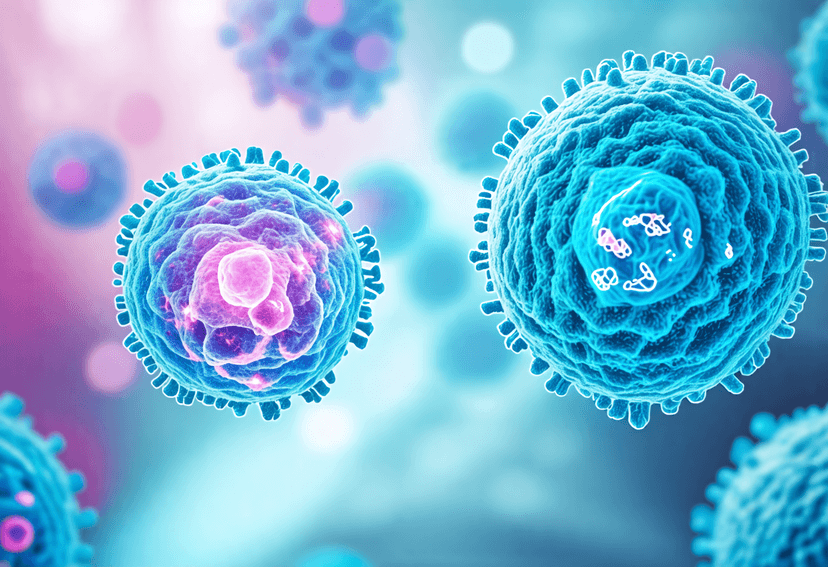
Targeted Therapy for Cancer: A New Approach
Learn about targeted therapy and its role in cancer treatment.
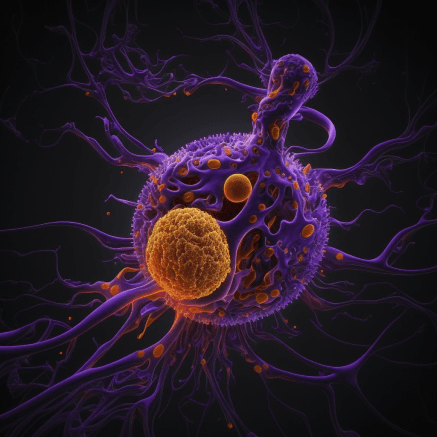
Pancreatic Cancer Treatment Options in the UK: A Guide for Patients from Russia
Facing a diagnosis of pancreatic cancer can be overwhelming, especially
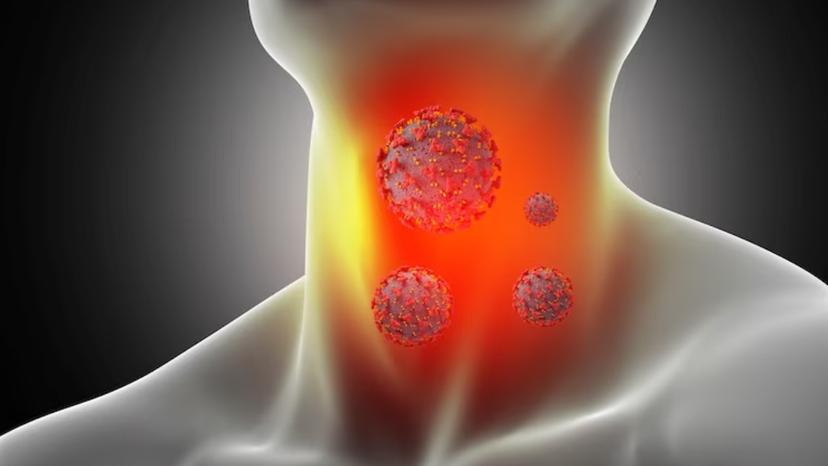
Treatment Options for Thyroid Cancer
Facing a thyroid cancer diagnosis is daunting, especially when considering
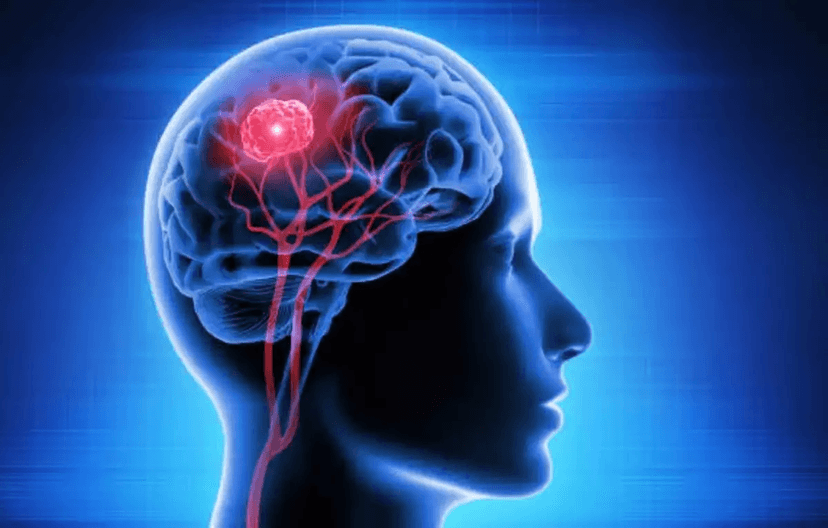
Brain Tumor Treatment Options in the UK
Facing a brain tumor diagnosis can be overwhelming. The good
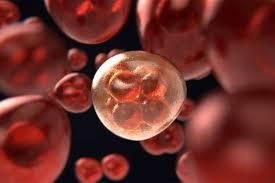
Exploring the Latest Advances in Prostate Cancer Treatments in the UK
Prostate cancer is the most common cancer among men in
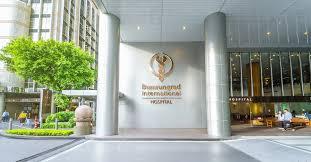
Top Hospitals for Colonoscopy in Thailand
In the quest for optimal health, colonoscopy plays a crucial












